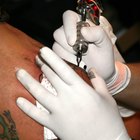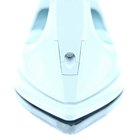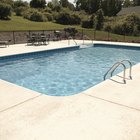
Manufacturers of golf club grips recommend replacing grips once a year or after 40 rounds, so it helps to know how to do it yourself. Grip solvent helps you remove residue from old grips and makes it easier to install the new grips. The solvent is toxic, though, and some alternatives can be used.
Purpose
Old grips need to be cut and stripped off clubs, but the grip tape underneath can be tough to clean off. Grip solvent makes the cleanup faster and easier, leaving a bare shaft for the new grips to be applied. Solvent is also used to activate new grip tape and makes it easier to slide the grips on during installation. When the solvent dries, the grip tape holds the grip in place.
Standard Solvent
The most commonly used solvent is made of 85 to 90 percent Solvent 160 and 5 to 15 percent limonene, which adds a citrus aroma. Solvent 160 is used primarily in paints, printing ink and pesticides. It is flammable and is dangerous if inhaled, swallowed or left on the skin for prolonged periods.
Paint Thinner
Some club repair hobbyists use paint thinner as an alternative. Paint thinner contains the solvent naphtha, which has similar hazards as Solvent 160.
Water
For a more environmentally friendly substitute, water-activated grip tape is available. Just mix 2 to 3 tbsp. of dish soap with 1 quart of water and apply the solution with a spray bottle to lightly dampen the grip tape. Soap should not be used for air-cushioned or ribbed grips.
Pressurized Air and Solvent
One technique uses an air compressor with a blowgun nozzle to greatly reduce the need for solvent. The club maker applies masking tape as he would grip tape, sets the compressor to 80 to 85 psi, dips the open end of the grip in a small cup of solvent and starts to apply the grip. With air blasted by the blowgun nozzle in the vent hole at the butt end, the grip will slide on easily.
Related Articles

Kinds of Glue to Repair Running Shoes

How to Remove Foam From Vinyl Window ...

How to Use Fabric Tape to Tailor Clothes

How Does Prewrap Tape Help Gymnasts?

How to Remove Running Sutures

How to Prevent Football Visors From ...

How to Clean Tattoos With Rubbing ...

How to Fix Thong Sandals

Blisters After Golf

How to Get Vinyl Lettering Off of a ...

How to Get Rid of Irritation After ...

Icon Alliance Face Shield Replacement ...

How to Clean 3M Shoes

How to Remove Adhesive No-Sew Tape

How to Loosen Up a Stiff Zipper

How to Use Neutrogena Microdermabrasion

How to Remove the Sole of a Sneaker

How to Repair a Fiberglass Swimming Pool

How to Glue Soles on Cheap Work Boots

How to Remove Liquid Stitch from ...
References
Writer Bio
Jeff Rogers has edited and written since 1987 for the Associated Press, United Press International and six newspapers including "The Dallas Morning News," "The Washington Times" and "Dallas Times Herald." A Charlotte native who holds a bachelor's degree in journalism (news-editorial) from the University of South Carolina, Rogers has also worked as a technology analyst, sales executive and professional golf caddy.
Photo Credits
golf image by cico from Fotolia.com